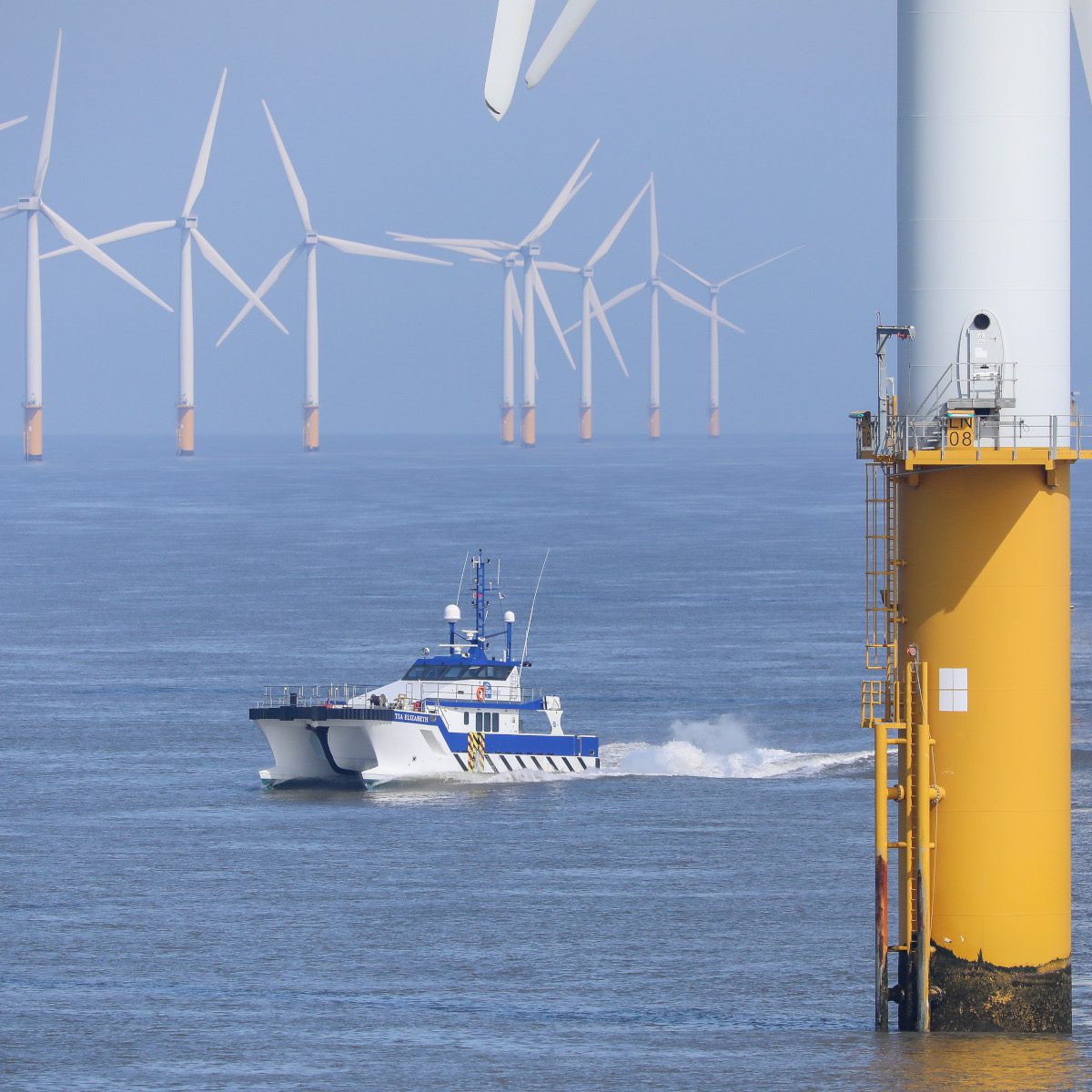
Leo Hambro explains why he believes the electrification of small vessel fleets to be key to decarbonising the offshore wind sector.
According to insight from Statista, the UK is the world’s second-largest installer of offshore wind,1 accounting for more than 20% of global capacity.2 Increasing demand and ambitious government targets are expected to see this figure triple by 2030, reaching in excess of 50 gigawatts (GW).
Embracing wind as a driver to accelerate our net zero transition not only addresses environmental concerns connected with greenhouse gas emissions, but also contributes to UK energy security and, as a result, economic growth. Indeed, the latest Global Market Overview from energy intelligence firm TGS-4C Offshore, reveals that the offshore wind industry is likely to experience a record year for investments. This follows a global record set in 2023, with offshore wind investments creating 12.3GW of capacity3 – more than a 1,400% increase when compared to 2022.
However, while clearly a cornerstone in our future energy mix, the offshore wind industry faces a significant challenge: tackling its own operational carbon emissions. Indeed, despite generating clean energy, the construction, maintenance and transport associated with the sector’s infrastructure contributes to a substantial carbon footprint. The use of conventional diesel vessels for crew transfer and repair operations only adds to the challenges holding the industry back from becoming truly net zero.
The traditional approach
Crew transfer is a crucial aspect of offshore wind operations, involving the transportation of personnel to and from turbines. Traditionally, internal combustion engines have been the primary means for crew transfer, providing a reliable and safe mode of transportation. But the environmental impact of fossil-fuelled powered boats provides a real pain point for an industry who’s modus operandi is generating clean energy.
After all, insight suggests that crew transfer vessels (CTVs) across the UK and EU alone burn approximately 1,500 litres of diesel per day, resulting in around 475,000 tonnes of CO2 emissions annually.4 Alternative fuel technology, such as for biofuel and hydrogen, are being developed for larger marine vessels and for aviation. The pressure on the offshore wind sector to adopt cleaner practices for small vessels is therefore becoming even more prescient.

Adopting a cleaner solution
In a major leap forward for the industry, notable progress in electric crew transfer vessels is helping to revolutionise transport to and from offshore wind farms. Harnessing electric motors for propulsion, the vessels (also referred to as E-CTVs) significantly reduce carbon emissions and are proving to be more efficient and cost-effective than their traditional counterparts. Companies like Artemis Technologies are at the forefront of E-CTV innovation, and just last week announced the commencement of a government-funded R&D project alongside Tidal Transit and the Offshore Renewable Energy (ORE) Catapult to support real-world demonstration of electric vessels.
The innovation behind E-CTVs extends beyond transportation, offering a glimpse into the future of offshore operations that prioritise technological advancement and environmental stewardship.
In the transition to electrification, however, careful planning is essential to maximise the positive impact of adopting this pioneering technology. After all, if wind farm operators immediately switch their fleets to E-CTVs, what happens to existing diesel vessels? Some may suggest that exporting them to other nations is a passable solution but, by doing so, we’d risk simply displacing our carbon footprint elsewhere.
The answer to this is retrofitting diesel-powered CTVs into E-CTVs. Not only does adapting vessels to run on 100% electric power alleviate both the demand for fossil fuels and the significant emissions linked to decommissioning vehicles, but it also greatly extends their lifecycle and ensures the drive for sustainability does not inadvertently further contribute to global environmental challenges – true circular economy thinking.
Pivotal to the success of electric vessels – whether new build or retrofit – is the parallel development of charging infrastructure, both onshore and off. While onshore charging solutions provide a convenient and reliable means for electric vessels to replenish their energy reserves, it’s in offshore charging infrastructure where the industry can really pioneer cutting-edge solutions. The integration of offshore charging, which allows E-CTVs to plug directly into wind turbines, allows vessels to simultaneously harness renewable energy and reduce fossil fuel reliance, while greatly extending their time on the water – an essential part of transport efficiency.
Government incentives, such as the £8 million Zero Emission Vessels Innovation (ZEVI) fund, for which Tidal Transit received capital injection to develop the world’s first retrofit E-CTV, and the £3.2 million grant to establish e-boat charging stations across the south coast, provide financial backing and encouragement for companies looking to implement low-emission technologies.

The transition to electric crew transfer vessels marks a major step towards achieving a more sustainable and environmentally responsible offshore wind industry. The multifaceted benefits derived from electrifying small vessels are compelling on both a national and an international scale. Alongside the substantial reduction in carbon footprint, the absence of combustion engines also contributes significantly to lowering noise pollution, eliminates the inherent risk of fuel spillages and translates into lower maintenance requirements, ultimately reducing operational costs for fleet operators.
As the world seeks to decarbonise through the widespread adoption of renewables, it is imperative to take a systemic approach and address emissions across all sectors. The electrification of small vessel fleets serves as a tangible example of how targeted efforts can contribute to the overarching goal of decarbonisation, not only within the offshore wind industry, but also in achieving a more sustainable and harmonious future.
For more information about Tidal Transit, visit www.tidal-transit.com or follow on LinkedIn: https://www.linkedin.com/company/tidal-transit-limited/.
References
[1] https://www.statista.com/statistics/264257/number-of-offshore-wind-farms-worldwide-by-country/
[2] https://www.nortonrosefulbright.com/en/knowledge/publications/cd73eaf0/global-offshore-wind-united-kingdom
[3] https://www.tgs.com/press-releases/record-year-in-global-offshore-wind-latest-report
[4] https://www.artemistechnologies.co.uk/news/zero-emissions-plan-for-crew-transfer-vessels-wins-clean-maritime-funding/






